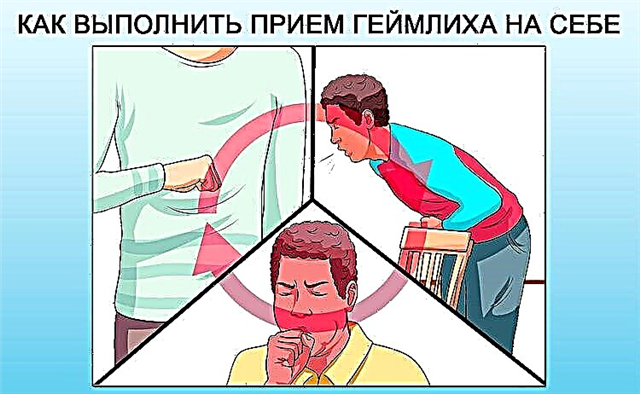Cough is one of the symptoms of diseases affecting the ENT organs, lungs, and heart. The causes of its development can be pathogens, allergens, tumor cells, harmful impurities in the inhaled air and other factors. It can be dry or wet in nature.
 Other additional symptoms play an important role in diagnosing the condition. Of great importance is the sign when, when coughing, it hurts under the ribs. This symptom may be due to acute processes or develop gradually.
Other additional symptoms play an important role in diagnosing the condition. Of great importance is the sign when, when coughing, it hurts under the ribs. This symptom may be due to acute processes or develop gradually.
Clarification of the diagnosis is necessary in all cases, since timely diagnosis contributes to more effective treatment.
Quite often, the development of this symptom indicates the need for urgent measures in the conditions of the surgical department.
Causes
The most common cause when ribs hurt when coughing is overstraining of the diaphragm muscles.
This condition can develop in any pathological process, which is characterized by a prolonged dry hacking cough. Most often, such diseases are:
- pharyngitis;
- tracheitis;
- laryngitis;
- whooping cough;
- ARVI.
Each of these diseases is characterized by a dry cough, which bothers the patient for a long time. In addition, this symptom is accompanied by a sore throat, scratching in the throat. A dry, paroxysmal cough can be bothersome for several weeks, interfering with rest and sleep. It is carried out by contraction of the diaphragmatic muscles. However, with prolonged work, constant contraction, muscle tissue overwork may occur, which is accompanied by the development of pain syndrome under the ribs when coughing.
The healing process is accompanied by a decrease in cough and other symptoms characteristic of this process. The load on the diaphragm will decrease over time, and the pain in the ribs when coughing will also regress.
However, ribs can hurt not only as a result of tension in the muscles of the diaphragm. Similar symptoms are also noted during the following processes:
- dry pleurisy and pericarditis;
- pleural tumors;
- intercostal neuralgia;
- shingles;
- hepatic colic;
- lung cancer;
- traumatic injury.
Dry pleurisy, pericarditis
Dry pleurisy is rarely an independent disease. It usually complicates the inflammatory processes in the lungs, manifesting itself as soreness in the chest when coughing, taking a deep breath, and turning the body. To reduce clinical manifestations, the patient is forced to take a forced position of the body on the affected side. He also needs to limit respiratory activity, which is manifested by shallow breathing.
Objective examination of the patient is very informative. The percussion therapist may notice a dullness in the lower lungs from the affected side. A mandatory sign of dry pleurisy are characteristic auscultation data.
Tumors of the pleura can also be characterized by similar symptoms. Of great importance for differential diagnosis is the history of the disease, which makes it possible to detect the development of symptoms after pneumonia, which is characteristic of the inflammatory process. Slower onset of symptoms is typical for a tumor. The final diagnosis can be made based on the results of the X-ray examination.
Pericarditis is characterized by the development of pain in the chest area. In addition, there is an increase in coughing, breathing, body movements, in a horizontal position. She gives in both hands, the epigastric region. In this case, severe shortness of breath is noted. The patient takes a forced position in bed with a high headboard.
Hepatic colic
Hepatic colic is a manifestation of chronic calculous cholecystitis and other liver diseases. The development of pain syndrome is caused by errors in diet, stress, driving on a bad road. The pain is paroxysmal. It is localized in the right hypochondrium, epigastric region, gives to the right arm, scapula. There is an increase in it when coughing, taking a deep breath.
One of the symptoms confirming colic is increased pain on palpation of the abdomen at the point of projection of the gallbladder.
The inflammatory process in the gallbladder is accompanied by the development of the following clinical symptoms, which must be taken into account when diagnosing:
- the presence of dyspeptic complaints, nausea, vomiting, bitterness in the mouth;
- yellowness of the skin and sclera;
- temperature increase.
Intercostal neuralgia
 Intercostal neuralgia is most often a complication of spinal diseases. The most characteristic in this case is one-sided shooting pain in the chest area. With the development of symptoms on the left, patients complain of lumbago in the region of the heart, aggravated by movement, deep inhalation, and coughing, which forces a differential diagnosis with angina pectoris. Taking nitroglycerin does not relieve pain. There may be complaints of shooting pain in the ribs.
Intercostal neuralgia is most often a complication of spinal diseases. The most characteristic in this case is one-sided shooting pain in the chest area. With the development of symptoms on the left, patients complain of lumbago in the region of the heart, aggravated by movement, deep inhalation, and coughing, which forces a differential diagnosis with angina pectoris. Taking nitroglycerin does not relieve pain. There may be complaints of shooting pain in the ribs.
Pain sensations with neuralgia are localized along the intercostal spaces and intensify with palpation.
Shingles also occurs with a pronounced pain syndrome along the intercostal spaces. The disease is characterized by unbearable pain, aggravated by the slightest movement, touching the affected area, coughing, deep breath. A mandatory symptom that helps to clarify the diagnosis is the formation of bubbles on the skin along the intercostal spaces. Within a few days, they merge with each other, then shrink, forming a crustal surface.
Lung cancer
Lung cancer is characterized by various pain sensations. Depending on the localization, the degree of damage, the stage of the disease, the pain can be aching, encircling. Most often it is constant, worse when coughing. With the involvement of the ribs and the spine in the process, it becomes more intense.
Concomitant symptoms in the form of prolonged cough, malaise, low-grade fever, the development of pain in the chest are the reason to conduct additional examinations and clarify the diagnosis. Hardware techniques that can clarify the localization of the lesion and its nature will help in this.
Trauma
Traumatic lesion of the ribs, chest is also accompanied by pain, aggravated by a deep breath, coughing. An X-ray examination carried out after the injury will clarify the nature of the lesion and resolve the issue of therapeutic tactics. In this situation, timely clarification of the diagnosis is important, since the development of pneumothorax can be a consequence of rib fractures. It is a life-threatening condition in which air builds up in the pleural space. The consequence of this is the collapse of the lung tissue and the disorder of the respiratory and circulatory functions.
This process can be caused not only by traumatic injury. In rare cases, due to physical exertion or an attack of coughing, pneumothorax can develop in patients even with a healthy lung.
With spontaneous pneumothorax, acute pain appears in the chest on the side of the lesion, aggravated by breathing, coughing, and movement. The treatment of such patients takes place in the department of the surgical profile.
Therapeutic tactics for each pathological condition depends on the cause of the development of this symptom.
Additional symptoms need to be identified for effective treatment. If necessary, laboratory examinations and hardware diagnostics should be carried out.



